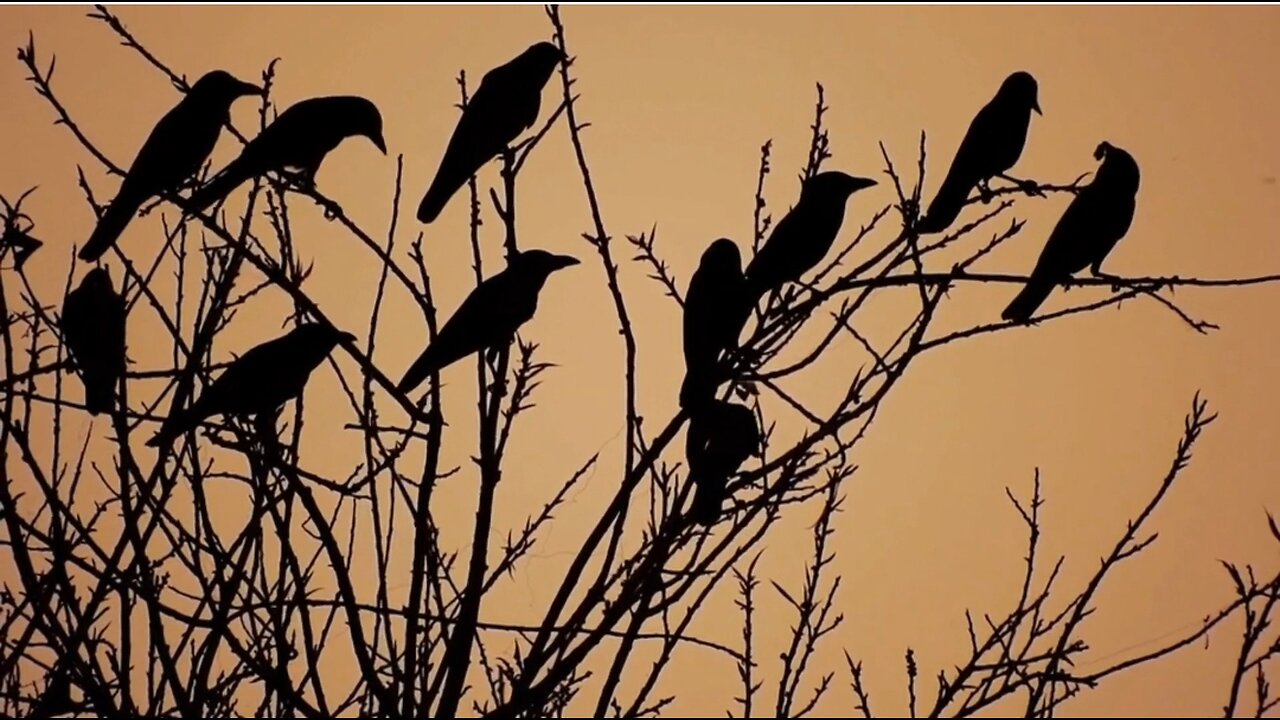Premium Only Content

"The World of Crows: Unveiling the Secrets of Nature’s Problem Solvers"
Crows are highly intelligent birds belonging to the genus *Corvus*, which includes around 45 species worldwide. They are part of the Corvidae family, which also includes ravens, magpies, and jays. Crows are known for their adaptability, problem-solving abilities, and complex social structures. Here's more about them:
### Physical Characteristics:
- **Size and Appearance:** Crows are medium to large-sized birds with a robust build. Most species have glossy black feathers, though some may have white or gray markings. They have strong, stout bills, black legs, and their eyes are usually dark brown or black.
- **Species Examples:** The American crow (*Corvus brachyrhynchos*), the carrion crow (*Corvus corone*), and the hooded crow (*Corvus cornix*) are some of the most well-known species.
### Intelligence:
- **Problem-Solving:** Crows are renowned for their intelligence. They can use tools, solve complex puzzles, and even plan for the future. Studies have shown that crows can recognize individual human faces and remember them for years.
- **Communication:** Crows have a sophisticated system of communication, using a variety of vocalizations to convey different messages. They can mimic sounds, including human speech, and use a range of calls to warn each other of dangers or to coordinate group activities.
- **Social Structure:** Crows are highly social birds that often live in family groups. They have a hierarchical structure within their groups and are known to engage in cooperative breeding, where non-breeding individuals help raise the young.
### Behavior:
- **Diet:** Crows are omnivorous and have a highly varied diet. They eat everything from insects, small animals, and eggs to fruit, seeds, and carrion. They are also known to scavenge in urban areas, feeding on human food waste.
- **Tool Use:** Crows are one of the few non-human animals that use tools. They have been observed using sticks to extract insects from tree bark, dropping nuts on roads to crack them open, and even bending wires to create hooks for fishing out food from hard-to-reach places.
- **Roosting:** Crows often gather in large communal roosts, especially in the winter. These roosts can number in the thousands and provide safety in numbers from predators.
### Habitat and Distribution:
- **Global Presence:** Crows are found on every continent except Antarctica. They are highly adaptable and can thrive in a wide range of environments, from rural farmlands and forests to urban cities.
- **Nesting:** Crows build their nests high in trees, using sticks and twigs. The nests are lined with softer materials like grass and feathers. They typically lay 3-6 eggs, which are incubated by the female while the male provides food.
### Cultural Significance:
- **Mythology and Symbolism:** Crows have a prominent place in various cultures and mythologies. In some cultures, they are seen as symbols of death or bad omens, while in others, they represent intelligence, cunning, or even divine messengers.
- **Folklore:** Crows have been featured in folklore around the world, often depicted as tricksters due to their clever nature. They also appear in literature, art, and popular culture as symbols of mystery and the supernatural.
### Conservation Status:
Most crow species are not currently endangered and are classified as of "Least Concern" by the IUCN. Their adaptability to human environments has allowed their populations to remain stable or even grow in some areas. However, habitat destruction and persecution in some regions can impact local populations.
Crows are fascinating birds with remarkable cognitive abilities and social behaviors. Their adaptability and intelligence make them one of the most successful bird species in the world.
-
 30:53
30:53
Uncommon Sense In Current Times
1 day ago $8.86 earned"Pardon or Peril? How Biden’s Clemency Actions Could Backfire"
56.3K4 -
 40:01
40:01
CarlCrusher
21 hours agoSkinwalker Encounters in the Haunted Canyons of Magic Mesa - ep 4
52.4K2 -
 59:44
59:44
PMG
1 day ago $6.77 earned"BETRAYAL - Johnson's New Spending Bill EXPANDS COVID Plandemic Powers"
58.7K22 -
 6:48:50
6:48:50
Akademiks
19 hours agoKendrick Lamar and SZA disses Drake and BIG AK? HOLD UP! Diddy, Durk, JayZ update. Travis Hunter RUN
180K30 -
 11:45:14
11:45:14
Right Side Broadcasting Network
9 days agoLIVE REPLAY: TPUSA's America Fest Conference: Day Three - 12/21/24
363K28 -
 12:19
12:19
Tundra Tactical
19 hours ago $13.27 earnedDaniel Penny Beats Charges in NYC Subway Killing
76.7K14 -
 29:53
29:53
MYLUNCHBREAK CHANNEL PAGE
1 day agoUnder The Necropolis - Pt 1
165K69 -
 2:00:10
2:00:10
Bare Knuckle Fighting Championship
3 days agoCountdown to BKFC on DAZN HOLLYWOOD & FREE LIVE FIGHTS!
63.9K3 -
 2:53:01
2:53:01
Jewels Jones Live ®
1 day agoA MAGA-NIFICENT YEAR | A Political Rendezvous - Ep. 103
157K39 -
 29:54
29:54
Michael Franzese
23 hours agoCan Trump accomplish everything he promised? Piers Morgan Article Breakdown
140K90